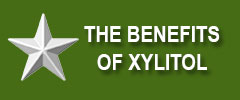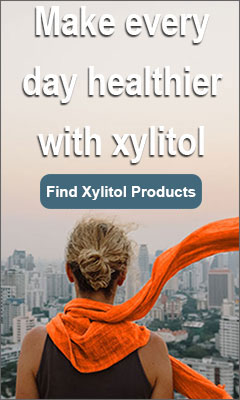.
…… WHAT IS XYLITOL
.
Xylitol is a sugar alcohol that is commonly used as a sugar substitute. It’s a naturally occurring substance found in many fruits, vegetables, and even in the human body. It has a crystalline, granular structure similar to sugar, and is just as sweet with no unpleasant aftertastes. Unlike sugar and many of other substitutes, xylitol has been clinically proven to benefit the mouth by preventing cavities and reducing the onset of gum disease. It has even been proven to treat and prevent ear infections and keep the nasal passage clear of bacteria, allergens, and other contaminants.
The History of Xylitol
In the early 1890s, scientists named Fisher and Stahe in Germany discovered the 5-carbon sugar that came to be called xylitol—and funnily enough was simultaneously discovered by a scientist named Bertrand in France. For most of the first half of the twentieth century, xylitol remained a research compound. However, war-induced sugar shortages forced scientists to find new sweeteners, and xylitol became a mainstay in countries like Finland. Scientists in these countries would go on to study the health benefits of the sugar many decades later.
Nearly seventy years after its discovery, in 1963, xylitol was approved for dietary use in the United States by the Food and Drug Administration, after which many countries began to follow suit. By the early 1970s, scientists were studying the effects of xylitol on dental plaque. Since then, thousands of clinical studies on the effects of xylitol have taken place, and the scientific community has accepted it as a beneficial substance. Since the first clinical studies in the 70s, xylitol has found its way into chewing gum, mints, nasal spray, hard candies, and many other consumable products.
Where is Xylitol Found?
Xylitol is found in fibrous fruits and vegetables, hardwoods, and even corncobs. On the industrial scale, xylitol is sourced mainly from corncobs or birch trees. Many prefer their xylitol sourced from corncobs, as it has less of an environmental impact—instead of harvesting trees, manufacturers harvest the corn and the cob, which was previously cast out as waste, provides the xylitol.
In the marketplace, xylitol tends to be incorporated into products meant for improving health, such as sinus cleansers and toothpaste. It can also be found in a variety of products as a sugar replacement, from chewing gum to hard candy and even in jam. And consumers can even purchase it in its raw form, just the same as buying sugar. Many dental practices encourage their patients to use xylitol, and some hand out samples of xylitol sweetened products during cleanings.




